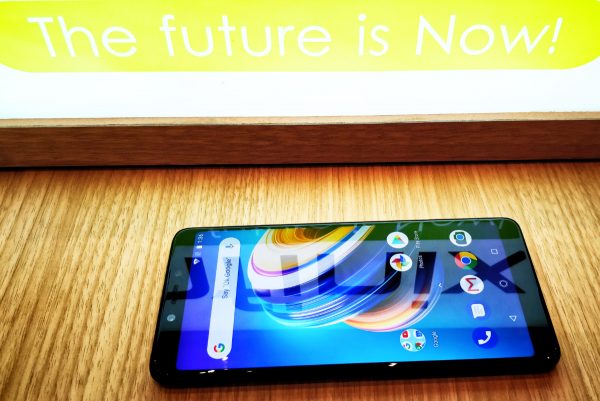Budget phones have been flooding the Indian market for long now and every company from the best known to the newbies fight for a larger share in this segment. Does this mean that smartphones in this segment can afford to compromise with the features that have the power to attract buyers? No. This simply means that even the budget segment is getting saturated with abilities that make the budget phone user happier. This is one of the reasons why brands like the Infinix Note 5 come tagged with punchlines like #BeyondTheBest and #BeyondIntelligent to make the competition sizzle.
A few years back the difference gap was too wide but with aesthetics and performance gradually trudging upwards, this points towards a camera that captures reasonably good pictures with AI pumping in a lot of tech-adrenaline. The Infinix Note 5 variants are, for instance, geared up to give a tough fight to brands like the Xiaomi Redmi Note 5 and the Honor 7C and gives consumers a fair ROI as the variants are available for Rs 9,999 for 3GB RAM/32GB storage and Rs 11,999 for 4GB RAM/64GB storage.
The Infinix duo comes with Android 8.1 Oreo OS offering a clutter-free and intuitive UI experience. Simplicity of interface gives the budget segment user an introduction to tech complexities without any stress, for instance, these phones have a slide-up on the home screen maneuver to open the app drawer, quick toggle and notifications are easily discernible, gesture control gets in to lend them a high tech feel, and a three finger slide captures screenshots. It doesn’t really matter if the fingerprint sensor isn’t fast enough or falters at times and it doesn’t matter if face recognition is included or not.
Let us talk about things that really matter. A large screen with the currently popular aspect ratio (5.99” FHD+ screen with 18:9 aspect ratio), camera strengths that don’t embarrass (16MP AI Selfie camera), battery that doesn’t induce sighs of discontent (3-day battery life with 4500mAh battery), charging speeds that make life easy (18W fast charging), and the most in demand Dual SIM Dual VoLTE scenario go hand-in-hand with sturdy hardware and intuitive software and are complimented with design inputs that are no longer stubby and off the trends. These are the features that probably prompted T L Lee, General Manager, MediaTek’s Wireless Communication Business Unit to remark: ‘Infinix is fast becoming a strong smartphone brand in India. Combined with MediaTek’s chipset technology – including the NOTE 5 powered by Helio P23 – Infinix brings consumers high-end features at an affordable price. MediaTek’s Helio P series delivers as per the consumer demand for the New Premium, mid-range devices that have powerful performance, incredible efficiency, longer battery life, and enhanced features such as dual camera photography, dual 4G VoLTE capability – in other words, the best smartphone experience to connect, share and do more.’ So yes, even at the low cost, these phones do give way to a smooth and seamless user experience. Even these budget phones are now talking about AI powered innovations such as Google Lens (for those who would love to identify an object of desire and want it located online for a purchase) and Google Assistance (for queries that are too demanding for the human mind, let’s say) to the highest grade of security.
The battery management is also AI dominated and tracks the consumer usage pattern of the smartphone to optimise battery life. Multi-tasking and a dynamic seamless visual experience are no longer what only expensive phones boast of because natural colour reproduction and 500 nits ensure better viewing in bright lighting condition. These phones come with 85% screen-to-body ratio with the screen built with 10-layer coating of reflective nano-chrome particles for a smooth and premium glass finish along with 2.5D curved glass edges.
The camera comes with 12MP rear camera with large 1.25-micron big pixel, f/2.0 aperture with dual LED flash with AI based Auto Scene Detection (ASD) feature to enhance overall photography experience. AI based portrait mode identifies objects/ humans to give reasonably fine bokehs, and the 7 shooting modes with normal, beauty, portrait, professional, panorama, low-light and time-lapse just the thing that even budget users will appreciate. The selfie or the front camera has 16MP f/2.0, with AI beauty mode that automatically detects 255 facial points, has AI Bokeh ability that measures pixel by pixel as it focuses on the main focal point and blurs everything in the background, comes with a 4in1 pixel technology for low light conditions in which 4 pixels merges into one pixel and helps in capturing more light for better quality pictures. The inclusion of a Softlight flash further improves selfies even in low light conditions. This phone, by the way, has a MediaTek Helio P23 MT 6763 2.0 Ghz Octa-Core processor based on 16 nanometer process to harness speed, efficiency, and a powerful performance. This also means that gaming and entertainment are not left high and dry.
It is the budget user preferences that make sales figures go to dizzying heights and I find it rather heartening to find that technology manufacturers have woken to this fact and aren’t focusing only on the premium segment. The budget segment, by the way, does not mean a focus on users from the semi-urban and rural belts but includes a huge chunk of technology users even from urban areas and obviously includes those who have had a fair introduction to the charms of the internet. The focus on this segment is also a necessary step to give India the digital footprint that it is working towards. The word budget doesn’t mean a low focus on the new-age technology innovations… it simply means making meaningful technology work at lower costs. The future of budgets phones is here… and now!
.
.
.
.
.
.
Arvind Passey
13 September 2018














